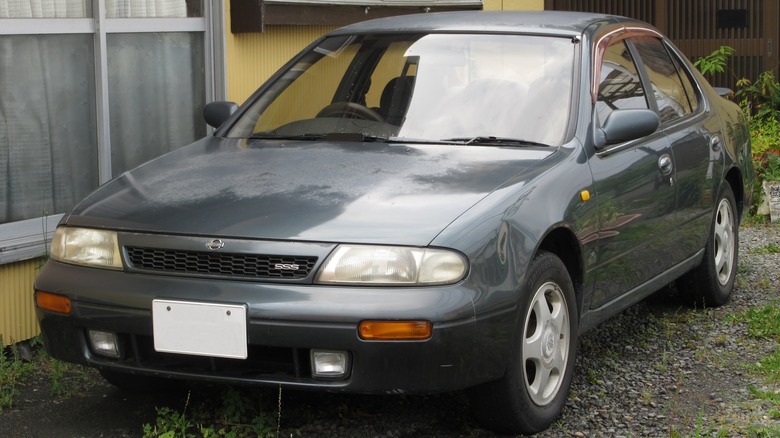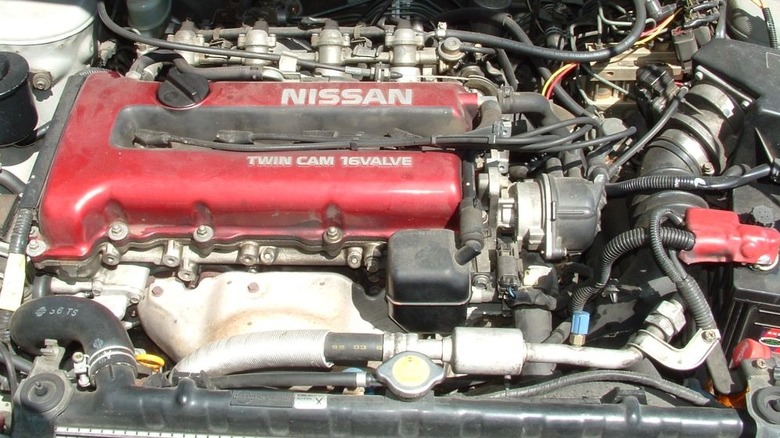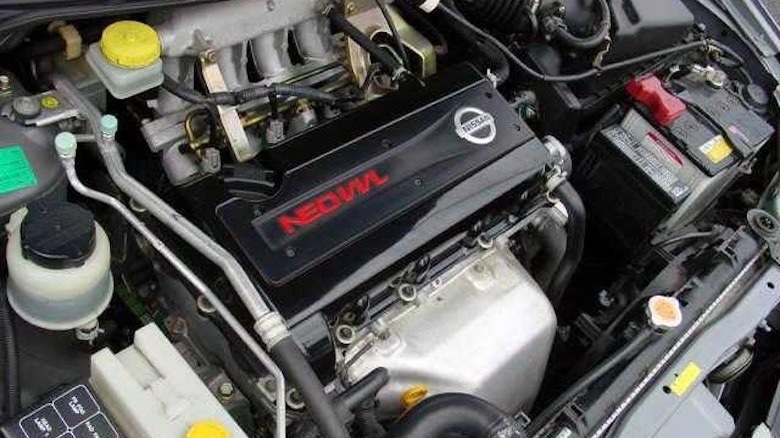SR20DET Vs. SR20VE - What's The Difference Between These Nissan Engines?
From 1989 to 2002, Nissan had a line of engines that powered many of the vehicles it produced called the SR series, which was short for Street Race. These engines weren't particularly large or powerhouses by any means, but these inline-four engines were able to satisfy those looking for a Nissan sedan or station wagon for over a decade. The SR series had many different variations available over the years, covering a variety of different sizes and features. Among the Nissan SR engines were the SR20DET and SR20VE.
Even though the two engines have incredibly similar names, have the same engine displacement, and share basic commonalities due to being in the same engine line, each engine has its own thing going. They each occupy their own era in Nissan's SR lifespan and are able to fulfill unique needs that the other engine may not. Let's break down the details of these two sister engines to determine just how divergent these seemingly similar machines are.
[Image by XVR 7785 via Wikimedia Commons | Cropped and scaled | CC BY-SA 4.0]
What is a Nissan SR20DET?
Although the Nissan SR20DET looks like just a bunch of jumbled letters and numbers, this collection of characters actually spells out for you exactly what kind of engine this is. You just have to break things down a little. The SR at the beginning naturally means that this engine is in the SR family. The 20 indicates that this engine has 2.0L of displacement, which is the largest volume of displacement in the SR family. Then there's the DET. The D means that this engine features a dual overhead camshaft, which gives the engine more power than you would expect. The E serves to show that it uses electronic fuel injection. Finally, the T simply means that this engine has a turbocharger.
The SR20DET was able to sustain the whole lifespan of the SR family, from 1989 until 2002, in a variety of different vehicles over the years like the Nissan Silvia and Bluebird. Depending on the vehicle it was in and what model year it was, this engine could generate anywhere from 200 hp and at the low end to 247 hp with its final iteration in the Silvia S15 from 1999-2002. Over the years, the color of the engine would change, be it red, black, or silver, which indicated different eras of the SR20DET.
[Image by RB30DE via Wikimedia Commons | Cropped and scaled | CC BY-SA 3.0]
What is a Nissan SR20VE?
The Nissan SR20VE got its start a few years after the SR20DET, first showing up for the 1997 model year in the Primera and Bluebird sedans and the Wingroad station wagon. Along with also being an inline-four engine, the SR20VE also shares two other factors indicated by its name with the previously discussed engine. It is a member of the SR family, and it has 2.0L of engine displacement. Then there is the VE section of the name. This means that the engine is also a Neo VVL engine, which is short for Nissan Ecology Oriented Variable Valve Lift and Timing.
As the name implies, this means that hydraulic pressure varies the lift and duration of the valves, which in turn improves performance and fuel efficiency. However, that doesn't mean it is quite as powerful of an engine as the DET, averaging anywhere from 187-200 hp, depending on the vehicle. If you wanted a Neo VVL engine that had the power to rival the DET, Nissan did make a variation called the SR20VET, which included the turbocharger.
It just goes to show you that even though two engines could have nearly identical names, there are so many details — both small and large — that make them distinctly their own.
[Image by Impreziv via Wikimedia Commons | Cropped and scaled | Public Domain]


